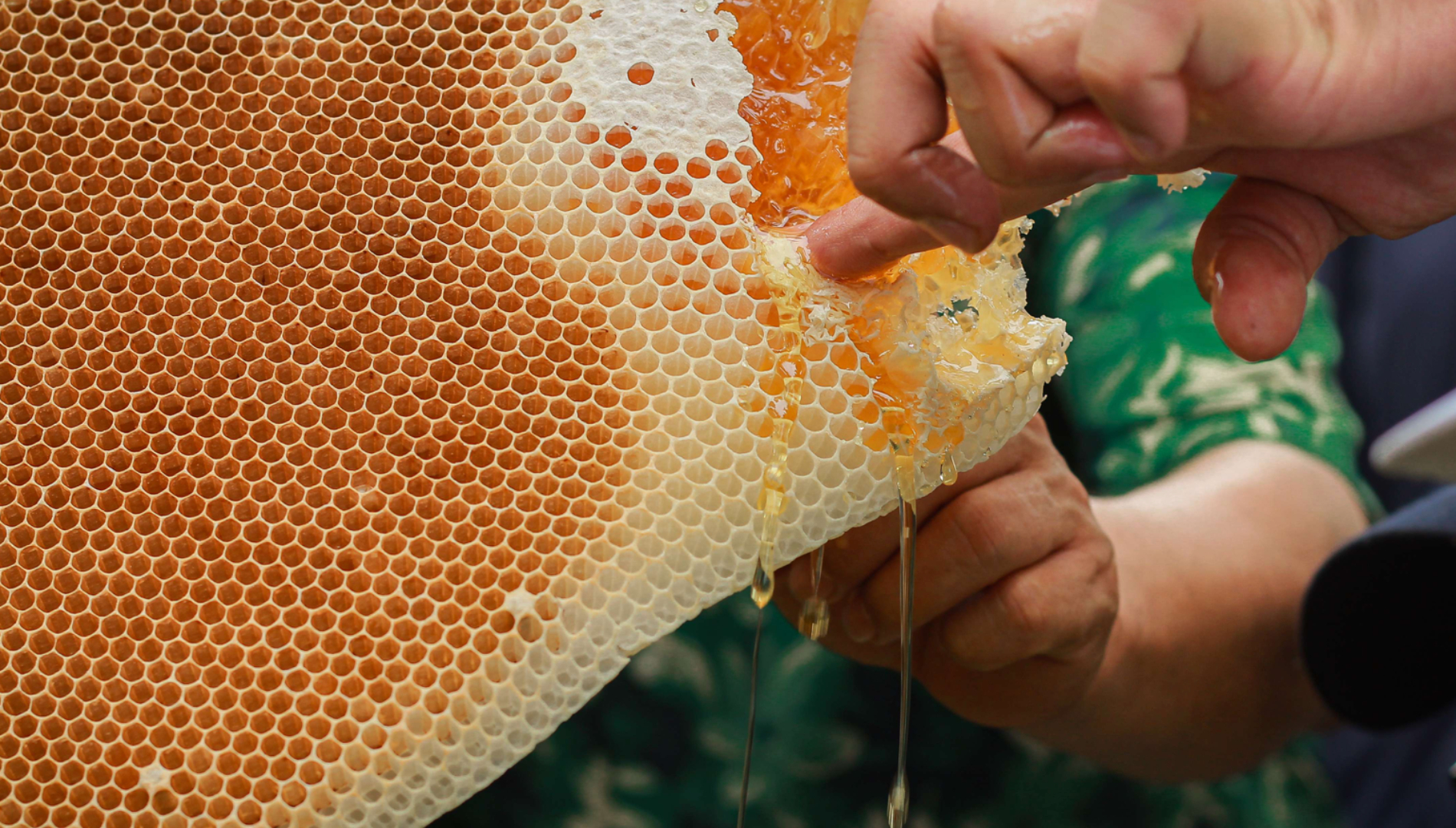Beehive at the "end of the world"
Beekeeping, a national intangible cultural heritage, has existed for hundreds of years and is closely associated with the lives of many residents under the canopy of U Minh Ha forest. This is not only a livelihood but also a unique cultural feature, demonstrating the close connection between humans and nature.
The profession of keeping beehives in U Minh Ha has a long history. According to historical documents, this profession appeared in the late 19th century, when the first people came to reclaim the land of U Minh Ha. Initially, honey exploitation was spontaneous, but later, people gradually accumulated experience and formed the profession of keeping beehives.
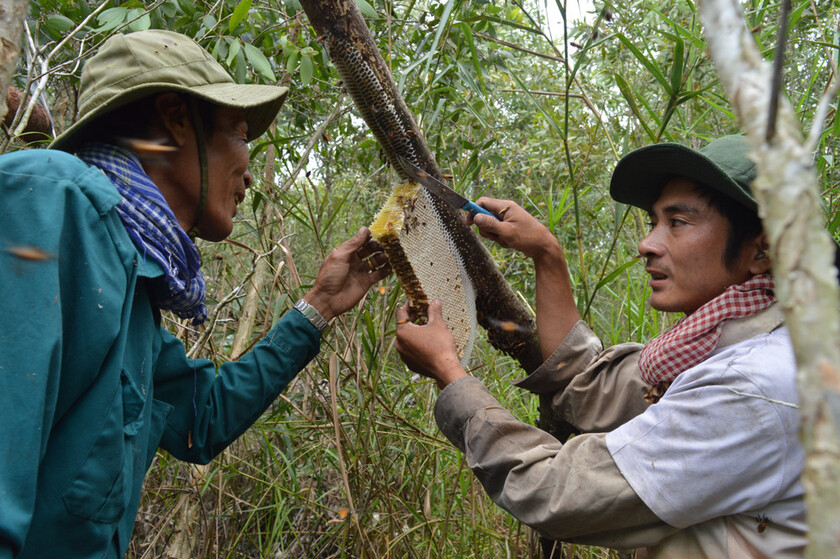
Existing for hundreds of years, the profession of beekeeping - a national intangible cultural heritage, is closely associated with the lives of many residents under the canopy of U Minh Ha forest.
Every time the U Minh Ha cajuput flowers bloom, the whole forest seems to light up, wearing a pure white coat, and it is also the time when honeybees from all over come here to make nests, creating a wonderful symphony of nature.
Since ancient times, the people here have observed and discovered an interesting habit of honeybees. They often only make nests in leaning, precarious tree trunks, similar to the shape of house rafters. Perhaps, it was from this subtle observation that the ancestors came up with a unique idea: building houses to attract honeybees.
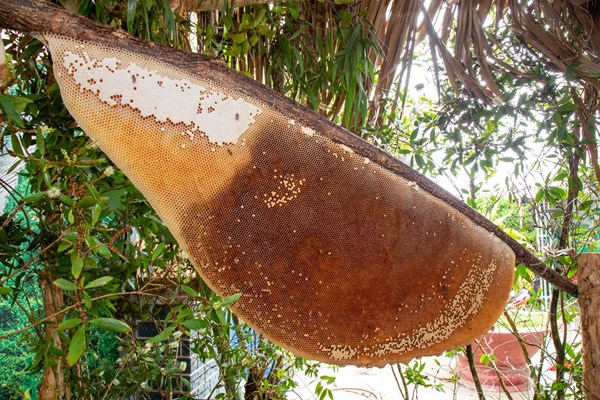
Our ancestors discovered that honeybees only make nests in tree trunks that lean like house rafters. From there, they built houses to attract honeybees.
After hundreds of years of development, the profession of keeping beehives has become a cultural feature of the U Minh Ha region. Beehive keepers are not only hard-working and creative workers but also artisans, who preserve and promote the traditional cultural values of their homeland.
In the middle of the 11th lunar month, before the late rains of the season fall, beekeepers will go into the forest to find a place to put up rafters to "build a house" to welcome the bees to make nests.
The truss system consists of two trees planted in the ground and a rafter placed above. The taller tree is called a nong tree, the shorter tree is called a crutch tree and the tree placed above is called a truss. According to many artisans who do this job, this job seems simple but is not easy because it requires high technique when placing the rafter, not everyone who places a rafter will have bees come to make nests.
The chosen cajuput tree must be smooth, 10-15 cm in diameter, peeled, dried, and smoothed. The truss is where the bees come to make their nest and bear the entire weight of the nest, which weighs 10-20 kg. In addition to knowing how to make a truss, choosing a place to hang it is equally important. The best location for a truss is where the cajuput tree is low and has many flowers, and where the sunlight shines down on the truss.
The person who keeps the rafters must know how to get the right direction of the sun and wind to ensure that the bees return to make their nests. After 15-20 days from making their nests, the bees will produce their first batch of honey. After that, about 10-15 days, they can collect a batch of honey. After only about half a month of making their nests, the bees can harvest honey for the first time, which the locals often call "bee-eating". A beehive can be harvested 6 times a year, each time from 3-4 liters of honey. Honey harvested in the dry season is considered the best and most valuable honey. Accordingly, U Minh Ha wild honey has two seasons: the wet season (rainy season) from the end of May to August of the lunar calendar, and the dry season from October to March of the lunar calendar.
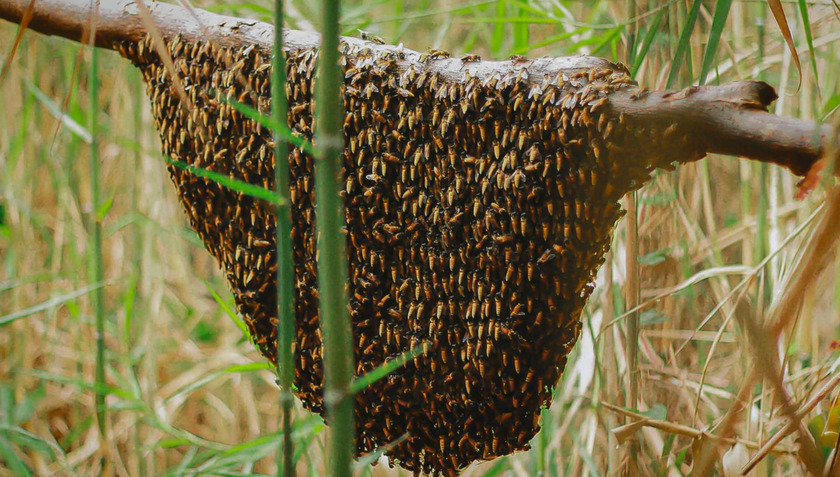
The worker chooses the wind direction, sunlight, the bee's flight path, and sets up the rafters at a height about the size of a human head. In particular, the rafters must be set up correctly so that the bees will build their nests and produce a lot of honey.
The weather in U Minh Ha is divided into two distinct seasons: dry season and rainy season. The dry season starts from May and ends in October, the rainy season lasts from November to April of the following year. Visitors can visit this National Park at any time of the year, but to experience "bee-eating", you should come from the end of May to the 8th lunar month or from October to the 3rd lunar month.
To reach the U Minh Ha cajuput forest, where bees diligently build their nests, there are two paths for you to choose from: either trekking along the trails winding through the forest, or riding on a boat - a typical means of transportation in the Mekong Delta.
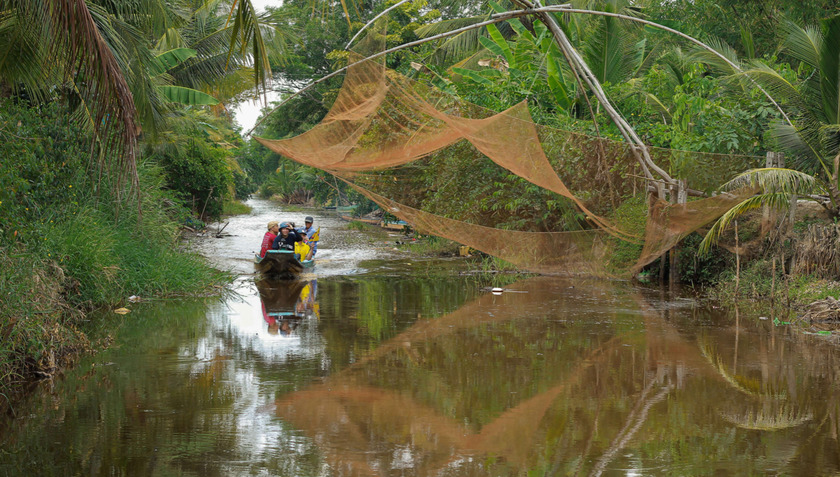
Experience visiting the river delta of the West
If you are an explorer and want to immerse yourself in nature, trekking trails will be a wonderful experience. The small trails wind under the cool green canopy of the Melaleuca forest, taking you deep into the heart of the forest. You will see with your own eyes the rows of tall Melaleuca trees, the wild plants growing in between, and listen to the birds chirping on the branches.
The interesting thing about trekking is that you can freely explore the hidden corners of the Melaleuca forest, learn about the diverse and rich ecosystem here. You can encounter wild animals such as monkeys, gibbons, deer, wild boars... or rare birds such as storks, herons, herons...
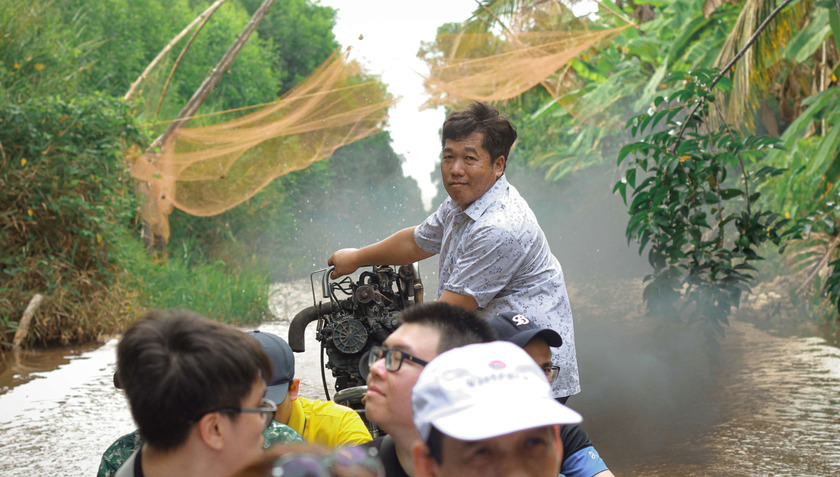
If you want to move faster and more comfortably, the boat will be the right choice. The boat, also known as the tac rang, is a small, long, diamond-shaped motorboat with an engine attached at the stern. This is a popular means of transportation in the southwestern provinces and the Mekong Delta, especially during the flood season.
Sitting on a boat, you will glide on the crisscrossing canals, winding through rows of green cajuput trees. You will see the simple stilt houses of the local people, the precarious monkey bridges across the canals, and the green rice fields stretching out. The boat is not only a means of transportation but also a part of the culture of the Mekong Delta. Sitting on a boat, you will feel the openness, freedom and closeness to nature of the people here.
Before approaching the beehive area, you will be given a net to cover your head. The worker also carries a small torch made of coconut fiber, a plastic bucket and a knife to help collect honey more easily.

With experienced workers, after setting up the rafters, they can predict when the bees will come to cover the rafters and when they will return to "eat the bees".
The entrance to the hive is quite small, both width and height are only about 1m. On the rafters, the bees swarm the honeycomb without leaving any gaps. The first step is to anesthetize the bees. The worker lights a torch (coconut fiber) and puts it in a bucket and puts it into the hive. Intoxicated by the smoke, the bees rush out, literally “the hive is broken”, flapping their wings around the worker’s head net.
When the bees have dispersed, you can approach the hive to observe it. The size of the hive and the amount of honey collected depend on the number of bees and the time of the “bee-hunting” trip. The bee-nesting tree is carried by two people to the grass near the place where the rice husks are parked for direct enjoyment. On the way, there may still be bees lingering and clinging to the hive.

After preparing everything, the beekeeper must erase all traces, because if he is passive, the bees will not come to "cover" (make a nest).
Tiny hexagonal compartments are placed alternately on the surface of the hive like a perfect arrangement of nature. The edge of the hive is white, yellowish and gradually turns dark brown towards the center due to the concentration of honey. Pressing on the hive with your hand, the golden, shimmering honey flows out. Under the bright sunlight, the honey seems to glow.
Professional beekeepers do not take the entire honeycomb, but only cut about 3/4 or 4/5 of the honeycomb (depending on the size of the nest) so that the bees can continue to build on the cut foundation. The honeycomb after being harvested has many products such as honey, beeswax, young bees, and bee pollen.
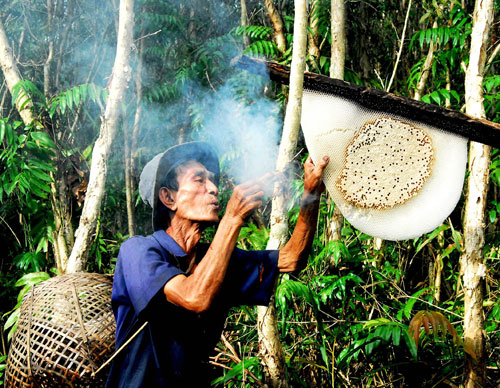
Beekeepers are using steel wool to chase away bees to collect honey.
Honey is a precious ingredient in medicine and food processing. Young bees are a favorite food of many people and can be processed into many dishes such as: young bees cooked in porridge, fried in flour, made into salad, honey sauce... Bee pollen has a health-restoring effect that is very effective for the elderly and people with weak bodies. Beeswax is the body of the beehive after the honey has been squeezed out, and can be used as a raw material to produce candles, lamps...

Each beekeeper collects hundreds of liters of honey after the hive season.


On June 18, 2020, the Department of Culture, Sports and Tourism of Ca Mau province held a ceremony to announce and hand over the Decision of the Ministry of Culture, Sports and Tourism recognizing the profession of beekeeping as a National Intangible Cultural Heritage to representatives of the People's Committees of U Minh and Tran Van Thoi districts. The recognition of the profession of beekeeping as a National Intangible Cultural Heritage has created more motivation for local people to continue to stick with the profession, creating conditions for sustainable economic development, contributing to improving the effectiveness of forest protection and poverty reduction in the locality.





